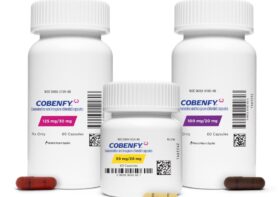What is Cardiovascular Disease and How to Prevent From It?

A great question from AJ. Cardiovascular disease, or heart and arterial disease, is the most common cause of death through a medical disorder in the United States and most developed countries. Each year around 635,000 individuals have their first incident and 280,000 experience a recurrent event.
Roughly every 34 seconds, one American has a heart-related event, and approximately every minute, an American will die of one.
The total cost of cardiovascular disease management is continuing to increase. For instance, according to the National Heart, Lung, and Blood Institute, the total direct and indirect cost of heart and vascular disease and stroke in the United States in 2009 was estimated to be $312.6 billion. This cost is significantly higher than the costs associated with cancer management, which was around $228 billion in 2008.
What Is Atherosclerosis?
Atherosclerosis, or hardening of the vessels, is the major cause of heart and vascular disease. In this disease plaque, which is made up mainly of cholesterol and calcium, narrows the arterial pathways, thereby reducing oxygen delivery to heart muscles and other organs. This abnormal and reduced blood flow can result in a heart attack or stroke. According to studies, around 70% of fatal, acute heart attacks are attributed to so-called “plaque rupture.”
Contributing Factors
1) High/abnormal blood-cholesterol level
2) Hypertension (high blood pressure)
3) Diabetes Mellitus
4) Smoking
5) Chronic inflammation
6) Family history
How to Prevent Cardiovascular Disease
The majority of people who have atherosclerosis don’t have any symptoms initially; that is why many people don’t take care of themselves and wait too long to get treatment. This disease is a slowly progressing one and can be hidden for far too long. Prevention works: many studies have shown that managing risk factors and avoiding harmful behavior can postpone and sometimes diminish the risk for cardiovascular disease.
Clinical data have clearly shown that managing and controlling high cholesterol, high blood pressure and other risk factors can reduce the risk of cardiovascular disease. For instance, cholesterol-lowering measures, beginning with lifestyle changes and escalating to medication therapy, if necessary, can improve the outcome of patients at risk of a heart attack.
A comprehensive dietary and behavior change also has the potential to reduce this risk. (Check out my article series about reducing cholesterol and triglycerides with diet.) There is no question that lifestyle changes should be the primary option for patients with any of the above contributing factors, especially if the management and preventive measures have been initiated early.
Currently, statins remain one of the major medications of choice for lowering blood cholesterol. These drugs have the ability not only to reduce the low-density lipoproteins (LDL) and increase high-density lipoproteins (HDL), but can also improve triglycerides and reduce inflammation.
High blood pressure can also be treated more easily if managed early. This condition also responds well to behavioral changes such as dietary changes, an increase in exercise, discontinuation of smoking, and stress management.
According to the Centers for Disease Control and Prevention, only one-third of patients with hypertension have their blood pressure under control; in other words, the rest of the population (two-thirds) comprises possible candidates for undergoing cardiovascular events in the future. In my opinion, this statistic is sad and horrifying at the same time. Please read the article about the ways of reducing blood pressure with diet.
In most cases, diabetes is also a preventable disease. Because of our society’s lifestyle changes, the number of diabetic patients has risen from 1.5 million in 1958 to 18.8 million in 2010. It is estimated that 79 million Americans age 20 and above have pre-diabetes.
Pre-diabetes is a condition where a person has a high blood glucose level, but not enough to diagnose that person with diabetes. In other words, it is one step away from full-blown diabetes. I believe that this is the time to attack diabetes and manage it, if not earlier. Seventy-nine million people are waiting to be diagnosed with diabetes, a disease that can result in personal limitations in addition to significant costs for society and the individual.
I don’t want to talk about smoking too much; I believe that most people are well educated about the terrifying consequences of smoking. Smoking has absolutely no benefits and is bad for your body; please stop poisoning yourself. Don’t wait until it is too late; you don’t have always to experience bad things before you know how harmful they really are.
Summary
Cardiovascular disease is the major cause of death in the United States and most developed countries. It causes a significant degree of human suffering and is associated with major and exponentially increasing financial costs. This condition can be successfully prevented with improved nutrition and management of risk and contributing factors, such as high blood pressure, high cholesterol and high blood glucose levels.
The post What is Cardiovascular Disease and How to Prevent From It? first appeared on Bodybuilding Supplement: Fitness & Nutrition Tips.


